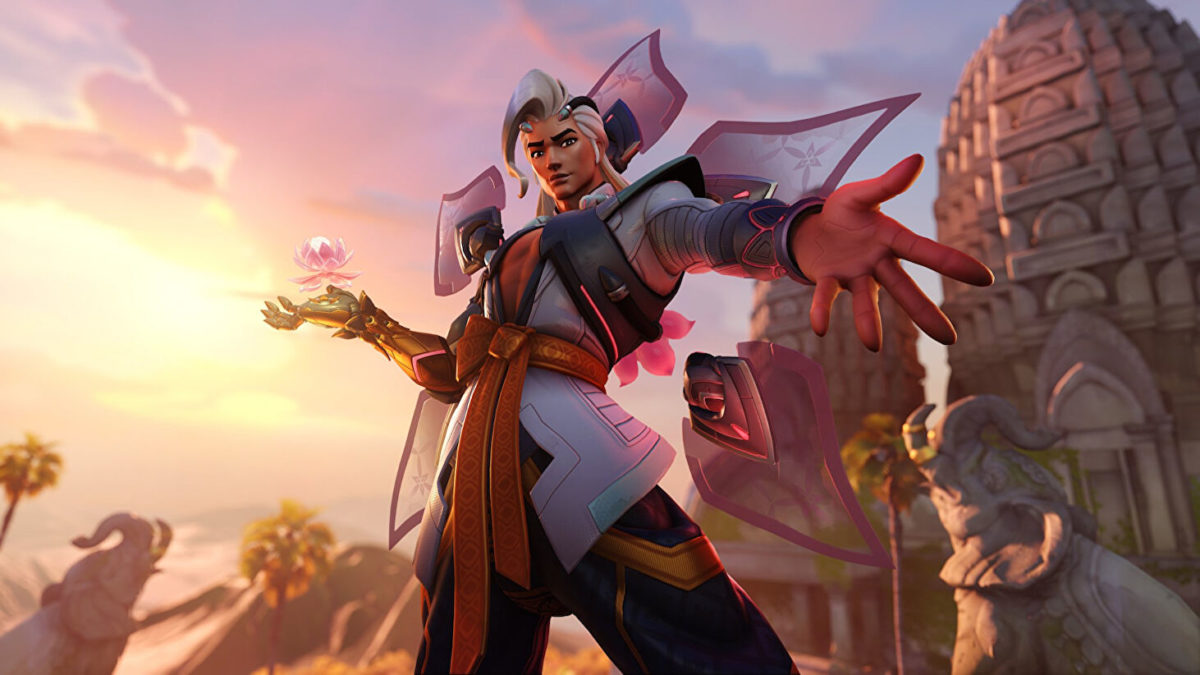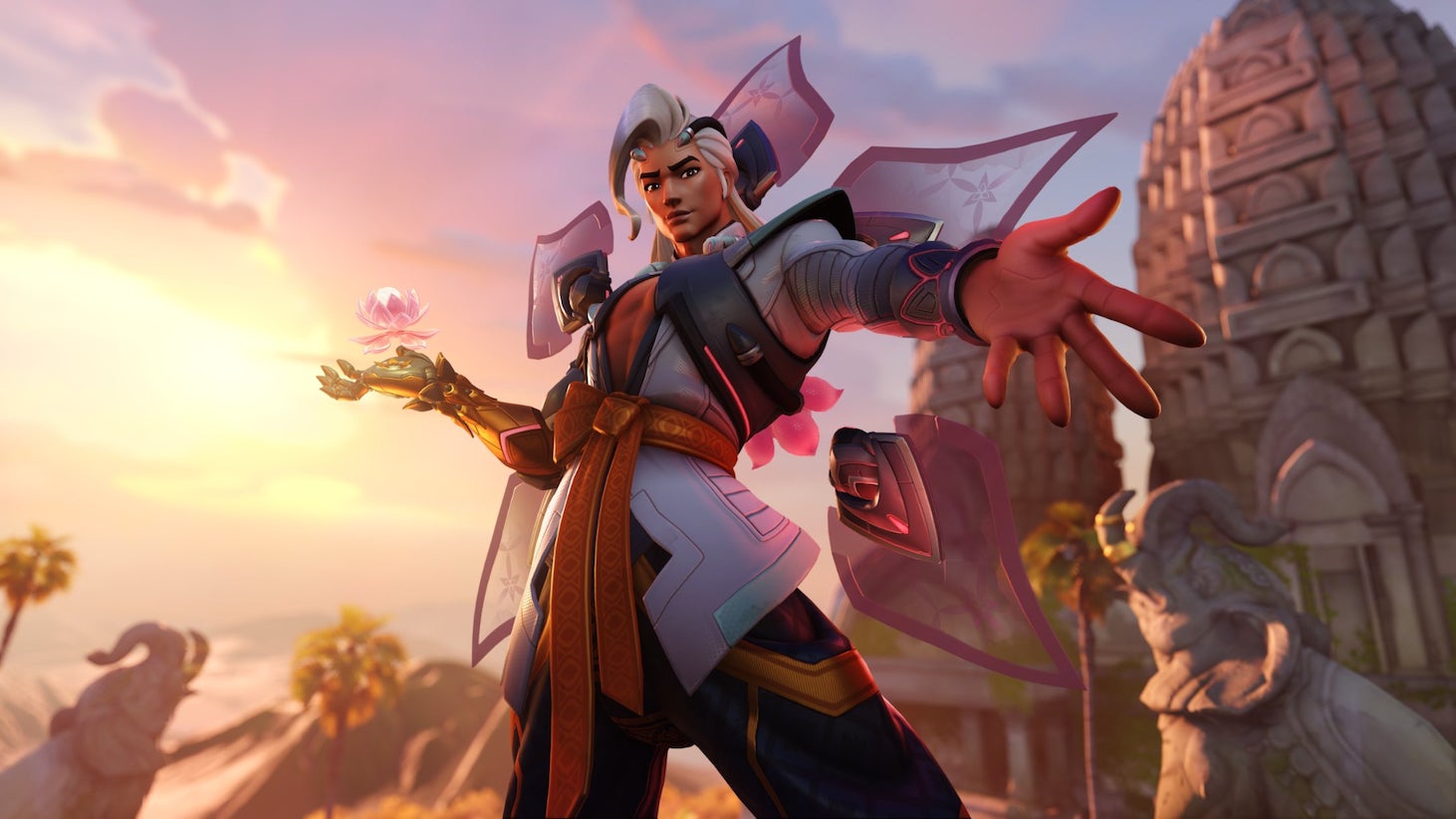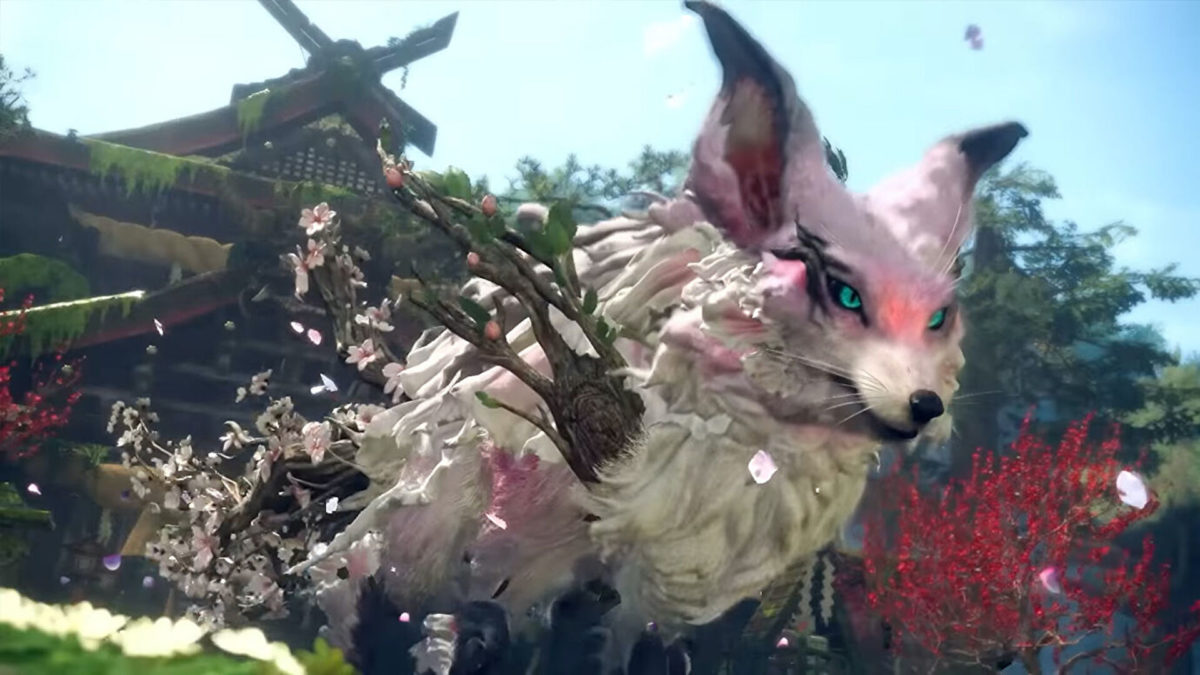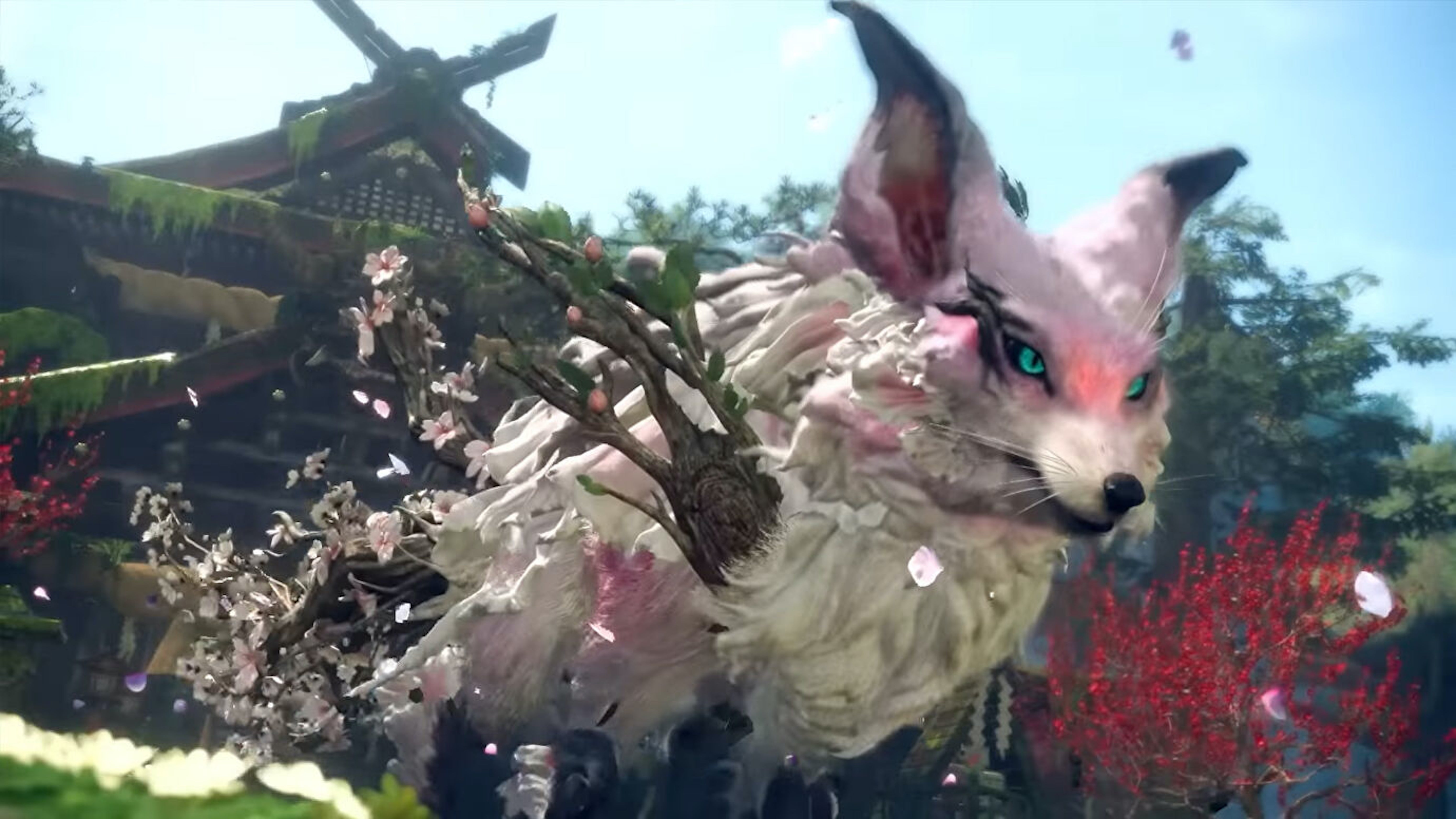Simply looking out over its gorgeous vistas and up at its gnarly monster designs was enough to sell a curious dungeon diver like myself on Ravenbound. But as much as that first impression made me want to love this 3D roguelike, turbulence threw this bird far off course soon after taking flight. What starts as a promising action game eventually had me flying against a torrent of obscure and regressive systems, a flurry of frustratingly uncontrollable loot randomness, and a storm of very annoying bugs that quickly grounded any hopes I had for it.
As The Raven, a weapon made by the old imprisoned gods of the world of Ávalt, you’ll possess a randomly generated character called a vessel on each new run. Every vessel has a different mix of mostly mediocre traits, weapon specialties, and even racial bonuses, but they’ll all inherit your own persistent ability to soar across the sky as a magic bird and absorb power from the foes you defeat in combat. You’ll wander the vast and boring stretches of this open world’s five beautiful regions, dropping in on enemy camps, killing everyone in sight, and collecting items as part of an aggravating card-based loot system until you’re strong enough to slay the betrayer god who doomed this world..
Combat isn’t complex, but it can be fun. Each of the five weapon types have unique properties you’ll start to notice after playing with them a bunch, though I wish they were explained more clearly from the start. Greataxes and the sword and shield are good for staggering, while greatswords have a wide swing that’s good for clearing crowds. With only a couple of combos for each, successful hacking and slashing comes down to mastering the satisfying dodge and parry systems, both of which give powerful combat buffs when executed precisely. In addition to helping you avoid damage, well-timed dodges put you in a frenzied state that supercharges your attack speed, while perfect parries can knock enemies down. The rewards for getting good at these techniques are well worth the risks, and are essential for taking down late game enemies and bosses.
That said, there’s so much about the systems that interface with combat that feels obtuse. Keywords tied to buffs, debuffs, and abilities can sometimes be straightforward like staggering enemies or bleeding, but others are far less obvious and occasionally not even defined in the codex. After the 15-plus hours it took me to beat the main story the first time, I still have no idea what a multistrike is, or what the Luck stat does. Enemies, who are at least plentiful and come in all shapes and sizes like little goblin-like soldiers, hulking ogres, and shifty tree spirts, have both standard and elite forms. The elites have modifiers denoted by a title like Juggernaut or Crusher, but again, it’s not very clear what the difference between them is. Discovering new mechanics and abilities for yourself is a staple of the soulslike genre, but there’s a line between nudging you to test your strength against mysterious opponents to reach an “a ha!” moment and being frustratingly opaque that Ravenbound is does not walk well.
Bugs drag down moments where I might otherwise be having fun.The Warden bosses at the end of every region are tough tests of your item builds and endurance as they relentlessly attack with long combos leaving very small windows for counterattack. Though they all come in the same form, a knight wielding one of the weapon types available to you, each one is a frantic back and forth fight. These challenges can be fun… when they aren’t suffering from some of Ravenbound’s most pernicious bugs, like one that doesn’t track boss health accurately. The life bar will frequently freeze in place, and even though numbers are registering with strikes, that damage may not be visible for several blows. This doesn’t make the bosses unkillable, but it does make having any idea of your progress against them impossible.
That’s also just one of many bugs plaguing Ravenbound. Audio tracks overlap with each other, or just cut out entirely; NPCs and shopkeepers occasionally vanish; I’ve had about a half-dozen crashes, which are annoying even if the auto saving is diligent enough that I never lost progress because of it. None of these are game breaking issues, but the sum of them does drag down the moments where I might otherwise be having fun.
Loaded Deck
Ravenbound may be a roguelike with a card-based progression system, but this is by no means a deckbuilder in the way something like Slay the Spire is. Instead, it uses collectible card game motifs to house otherwise familiar systems in ways that are hit and miss. Everything you could potentially find or earn during a given run is a card in your “deck,” be that gear like a suit of armor that makes enemies bleed when they hit you or buffs that do things like increase your weapon’s attack power. Every time you would gain one of these things, you “draw” your choice of one of three cards from the larger deck to see what it will be, and it then sits in your “hand” until you spend a resource called mana to activate or equip it. I liked that this meant I could hold onto something that might be useful in the future even if I couldn’t use it right now, making finding new loot a little less all-or-nothing than some other roguelikes.
However, the lack of any actual deck building mechanics within this card system is a big issue. With no way to curate or guide the randomness of the cards in your deck to help you draw toward a more consistent result, I felt like I was at the mercy of the cruel RNG Gods every run. Even Ravenbound’s persistent progression systems that reward you for achieving in-game feats, like killing a certain amount of a monster with a particular weapon, just add more items to the overall pool. These are better, cooler items – like a sword that curses everything you strike with it – but they also mean the probability of seeing any specific one only ever gets lower.
I wish I could better influence what was in my deck.There are at least a decent handful of ways to earn item draws mid-run. Straight up buying them from vendors, who sell a randomized selection of items or provide chances to draw from pools of specific item types, is the safest way, but it costs gold which you’ll need to earn by clearing camps full of monsters. Alternatively, the elite monsters in camps drop fragments, collecting three of which allows you to draw three cards from your deck and add one of them to your hand. These monsters are also often guarding treasure chests, which you can open to get your hands on some loot. There are a lot of opportunities to draw cards, and even though none of them come without a cost (be that literal money or a fight to overcome), I always felt like I had opportunities to take another spin of the wheel – I just wish I could better influence what was on it.
I often chose not to spin that wheel at all thanks to the hatred mechanic. Whenever you open a chest or attempt to collect items from other players’ graves who died in your area in their own games, a card on your next draw is replaced with one that automatically buffs every elite and boss monster in the region for the rest of your run. Every time you combine fragments, a three-piece bar in the bottom-right corner fills up a little more. When one of the sections is filled up entirely, it will similarly turn one of your next card draws into a boss buff until you kill the boss of the particular region you are in. These enemy buffs can really add up, and make every draw more and more risky – sometimes disproportionately, so since there’s no way to guarantee that the next card you draw is even useful, let alone good, after fighting increasingly harder enemies for it.
There’s an early reprieve for this built into the main quest. When you first enter each of the five regions, a rift is marked on your map. Traveling across these beautiful forests, arid deserts, or dank marshes to get to them (either on foot with the aid of a grappling hook or by switching into the form of the eponymous raven by hopping on top of special altars), these rifts present you with an opportunity to cleanse a handful of nearby chests of their hatred while scoring a good amount of mana in the process. Taking down the rifts guardians, and then plundering the newly clean treasure for “free” helps get you off to the races, but I found that if I didn’t get a solid weapon, armor, or key relic for a strong build out of this initial haul, then I was likely better off just re-rolling a new character than attempting to wing it for the next hour.
If you follow the main quest markers, you’ll spend very little time in each region outside of clearing rifts and fighting world bosses. There’s a side quest for each section, but that involves traveling to a lifeless city, talking to wooden NPCs, and taking on a task that is just some version of killing a target with the added frills of a completely ignorable motivation from a throwaway character. As an open world game, you’re free to explore on your own, but there isn’t a huge reason to do so very thoroughly. As enticing as the well-designed ruins of old forts or mysterious mining caves are, there is often no prize in them worth the trouble that you couldn’t also find just dropping in on any random camp on the surface. This is a hugely disappointing use of Ravenbound’s beautiful, Scandinavian folklore inspired environments.



 Overwatch 2‘s next playable character is a support hero called Lifeweaver and he’ll be joining the roster alongside Season 4, expected to begin on April 11th. Blizzard had
Overwatch 2‘s next playable character is a support hero called Lifeweaver and he’ll be joining the roster alongside Season 4, expected to begin on April 11th. Blizzard had 
 Wild Hearts is getting its first new Kemono species later this week as part of a post-launch update. April 6th will bring new creatures to hunt, new abilities to hunt with, and more ways to enhance your equipment – presumably to get better at hunting.
Wild Hearts is getting its first new Kemono species later this week as part of a post-launch update. April 6th will bring new creatures to hunt, new abilities to hunt with, and more ways to enhance your equipment – presumably to get better at hunting.